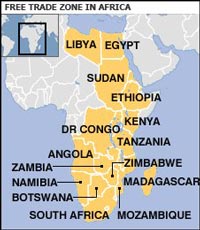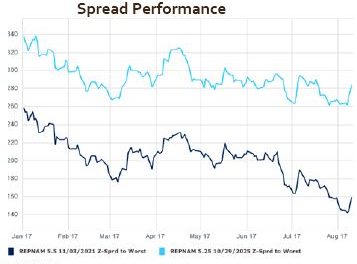
Achievements of Namibian Secondary Education since Independence

By HJ Sartorius von Bach.
The media often suggests that the Namibian secondary education system did not stimulate students to generate the required outputs for higher education and those for the labour market. To provide a balanced perspective on the system, this article summarizes some achievements. Education remains an investment in human capital that pays off in terms of higher productivity to generate improved livelihoods and economic growth.
Soon after Independence the Namibian leadership was tasked to provide a fair chance for every child to be adequately prepared for life through improved education. Reforms took place to provide free access to education, improve equity, open equal opportunities and affirmative measures. However, these noble aspirations require measured success to meet Vision 2030 to improve literacy, skills, articulation, innovation, information and pro-activeness. A longitudinal approach was executed to measure the grade 12 results to determine the reform response. The following positive findings are presented below:
Increased access to Senior Secondary Education Certificates
From a national perspective, it is clear that the access to secondary education increased significantly. Access to exit certificates can be defined as the student rate passing the Grade 10 exam and being allowed to sit for the final senior secondary exams. Results show that Grade 12 student enrollment for the Namibia Senior Secondary Certificate Higher level (NSSCH) increased form 904 students in 1996 to 16,308 in 2017. This is eighteen fold compared to Namibian human population growth of 3.8%. It is a great achievement and the cornerstone to human capital formation.
Comparing the Namibia Grade 12 enrollments with those of South Africa, the pattern differs. South Africa’s senior secondary school enrollment declined in relative terms soon after their independence, while the Namibian effective gross enrollment growth only started 9 years after independence and is still increasing. This development can be interpreted that parents are sending their children to school rather than using them for work, even in the current difficult economic times.

Increased Grade 12 students’ enrollment in higher level subjects
The increased enrollment number of grade 12 students has to be put in perspective. Comparing it to human population figures, the table below shows increased numbers from 1996 to 2017. Both numbers of higher level and ordinary level students over time relative to the national human population have reached a so-called ceiling of what is demographically possible. From the human capital perspective it is remarkable that the access rate to higher level subjects increased more than the rate of Grade 12 ordinary level subjects. This gap between NSSCH/population and NSSCO/population reduced from 0.64% to 0.24% within 2 decades and reflect the importance of higher level subjects as entrance for higher level education or job opportunity.
|
Year |
Higher level Certificates |
Ordinary level certificates |
Namibian population |
NSSCH /population |
NSSCO /population |
Gap |
|
1996 |
904 |
11,789 |
1,706,000 |
0.05% |
0.69% |
0.64% |
|
1999 |
1,170 |
11,088 |
1,858,000 |
0.06% |
0.60% |
0.54% |
|
2005 |
3,463 |
13,850 |
2,032,000 |
0.17% |
0.68% |
0.51% |
|
2009 |
7,784 |
17,225 |
2,137,000 |
0.36% |
0.81% |
0.45% |
|
2013 |
11,728 |
19,501 |
2,113,077 |
0.56% |
0.92% |
0.36% |
|
2017 |
16,308 |
22,084 |
2,368,700 |
0.69% |
0.93% |
0.24% |
To place the aggregated national enrollment in perspective, the following graph explains from where incremental changes originated. The figure clearly points out some regional skewness. The historically neglected regions show the highest relative student enrollment in higher level subjects, such as Zambezi, Omusati, Oshana, Ohangwena and Oshikoto, while Grade 12 students from Kunene, Omaheke, Otjozondjupa, and Hardap were less incentivized and supported to register for higher level subjects.

Rural regions generate top performing students
Differentiating high performing students from the rest, it is interesting to observe that private schools are performing much better than government schools, both in absolute and relative terms. The existence of private schools is probably the contributing cause that the overall educational performance, especially in the Khomas region is better than those of regions without these schools.
Economic theory argues that the central regions’ government schools should do best because of their more enabling environment, but unfortunately, the Khomas government schools lost their competitive share of producing top performers during the past decade.
A normalized score analysis compared the Grade 12 top performers at independence and thereafter. A snapshot of achievements during the earlier Cape Senior Secondary education system with the current education output was done.
Although the proportion of NSSCH top performers declined from 14.8% to 2.3% on the national level during the past two decades, it is respectable that rural regions caught up with the central hub to generate top performing students. Specifically the Otjozondjupa, Omaheke, Oshikoto and Hardap regions must be congratulated.
Furthermore, it should be noted that for several years, Oshana, Omusati, Kavango, Ohangwena and Zambezi schools started to produce top performers. This achievement is the result of decentralizing education, and that the return of the huge investment in education in general showed first signs of human capital formation. It is a step to skills development to start a new generation of jobs.


With these achievements, the time is ripe to further unleash the latent capabilities of the youth by equipping them to improve productivity. In anticipation of the 2018 NSSCH results, we trust that the coming results are respectable and continue to respond to the different strategies in place.













































